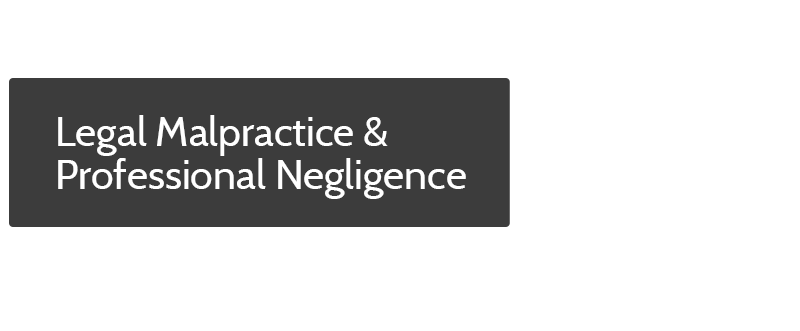Damages in Legal Malpractice: How Much Must a Client Suffer to Prevail?
Damages are a mandatory element of a legal malpractice claim.
This means that unless the plaintiff suffers actual damages, (s)he cannot prevail and obtain a judgment against an attorney for malpractice. In fact, if it’s clear no damage resulted from the attorney’s professional negligence, the court will dismiss a malpractice lawsuit before trial.
HOW MUCH DAMAGE MUST A CLIENT SUSTAIN TO SUPPORT A MALPRACTICE CLAIM?
The client-plaintiff’s damages must be real, measurable, and documentable. Nominal damages, meaning damages which caused no measurable economic or other harm, are not enough to sustain a malpractice claim. Similarly, speculative damages–damages which might occur in the future but have not yet occurred–are not enough.
Damages need not necessarily be economic – damage to the plaintiff’s business or legal rights will suffice, as long as the damages are real, documented, capable of quantification, and provable by admissible evidence. However, financial damages are often easier to document and prove.
IN LITIGATION MALPRACTICE, THE DAMAGES MUST BE “COLLECTABLE”
When the malpractice claim relates to a lawyer’s negligence in handling a lawsuit, the client-plaintiff must prove not only that damages resulted from the malpractice, but that the client could have collected a favorable judgment from the defendant in the original case. Courts will not sustain a malpractice action against an attorney on the basis of non-collectible damages, because the client-plaintiff could not have “actually obtained” the money even if the negligence had not occurred.
This results in a two-pronged obligation for plaintiffs in litigation-related malpractice. First, the plaintiff must prove that but for the lawyer’s malpractice, the client would have obtained a favorable (or significantly more favorable) judgment or outcome. Second, the plaintiff must prove that the judgment (if monetary in nature) could have been collected or (in the case of injunctions) enforced against the original defendant.
PROVING DAMAGES IN MALPRACTICE ACTIONS
Experienced litigators know how to document and prove a client’s damages in a malpractice case. If you’re uncertain about the amount or proof of your damages, consult a malpractice specialist for an evaluation of your legal rights. Future posts on this site will examine the damages requirement in more detail, but delay may cost you valuable legal rights, so if you believe you have a claim for legal malpractice, obtain a consultation with an experienced, licensed attorney immediately.
***
Disclaimer: Damages, like other elements of a legal malpractice claim, is a complicated topic, and articles like this can only touch on the basic issues. The details of a legal malpractice claim are individualized and complicated. Your rights and experiences may vary. Never use an article (or any online source) to evaluate your legal claims. Always speak with an experienced lawyer promptly to obtain a personalized evaluation of your claims, possible damages, and options.















